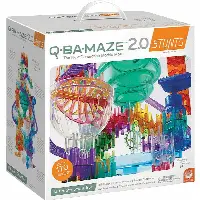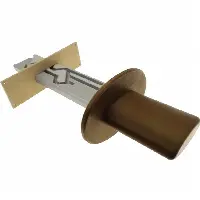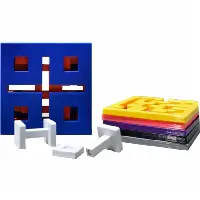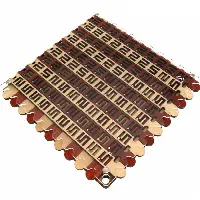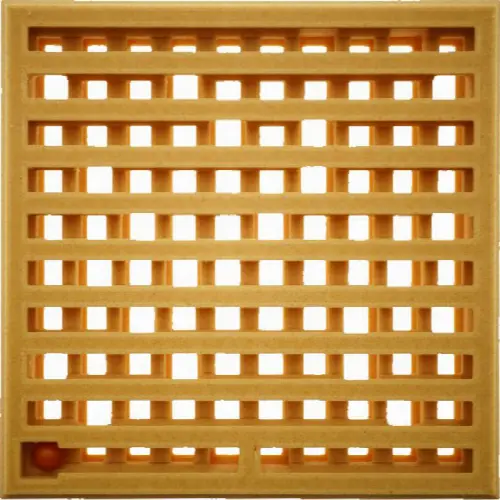
Boston Subway Maze
Boston Subway Maze was named by Dave Rossetti, who used it as an exchange puzzle at the International Puzzle Party in Boston, 2006. George Miller and Dave developed a laser-cut acrylic version with a one-way trap to reset the puzzle, based on Oskar van Deventers' design from 2005. The puzzle has ten horizontal lines and ten vertical, which are linked at some places by holes where the ball can go through. The object is to get the ball out. The name of the puzzle refers to Boston's historic subway system, where four lines form a square in Boston’s center. Up to this day, there is no connection between Boston's red and blue lines.
The puzzles tales 9 hours and 20 minutes to 3D print on a Dutchy 3D printer. 90 gram (30 meter) of 1.75-mm filament was used. The filament is based on transparent PLA plastic that is infiltrated with 20% of oak wood fibres, giving its wooden look-and-feel.
Made by Oskar van Deventer, who has created many different puzzles including his brand of Oskar Puzzles which are mechanical puzzles and objects that can only exist thanks to 3D printing technology. Since 1978, he has been creating hundreds of mechanical puzzles, making him one of the world's most prolific designers. Several of his innovative designs are commercially available.
The puzzles tales 9 hours and 20 minutes to 3D print on a Dutchy 3D printer. 90 gram (30 meter) of 1.75-mm filament was used. The filament is based on transparent PLA plastic that is infiltrated with 20% of oak wood fibres, giving its wooden look-and-feel.
Made by Oskar van Deventer, who has created many different puzzles including his brand of Oskar Puzzles which are mechanical puzzles and objects that can only exist thanks to 3D printing technology. Since 1978, he has been creating hundreds of mechanical puzzles, making him one of the world's most prolific designers. Several of his innovative designs are commercially available.
$61.44
